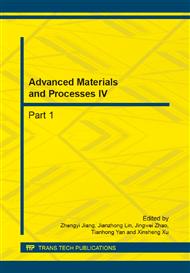p.751
p.755
p.760
p.764
p.769
p.773
p.777
p.782
p.787
Influence of Cutting Conditions on Chip Formation in High Speed Milling of Brittle Graphite
Abstract:
Graphite chip formation is important for the understanding of high speed milling of brittle graphite. This paper is aimed to reveal the influence of cutting conditions on the graphite chip formation in high speed milling. The relationship between the maximum undeformed chip thickness and cutting parameters was analyzed, and the influence of cutting parameters, tool geometry and milling patterns on the chip formation of brittle graphite was studied. It is concluded that the transitions of graphite chip formations were highly dependent on the undeformed chip thickness which is decided by the combination setting of feed per tooth and radial depth of cut. Big fractured block chip occurs more easily in up milling than down milling. Tool rake angle influences the chip formation according to the maximum undeformed chip thickness.
Info:
Periodical:
Pages:
769-772
Citation:
Online since:
September 2014
Authors:
Keywords:
Price:
Сopyright:
© 2014 Trans Tech Publications Ltd. All Rights Reserved
Share:
Citation:


